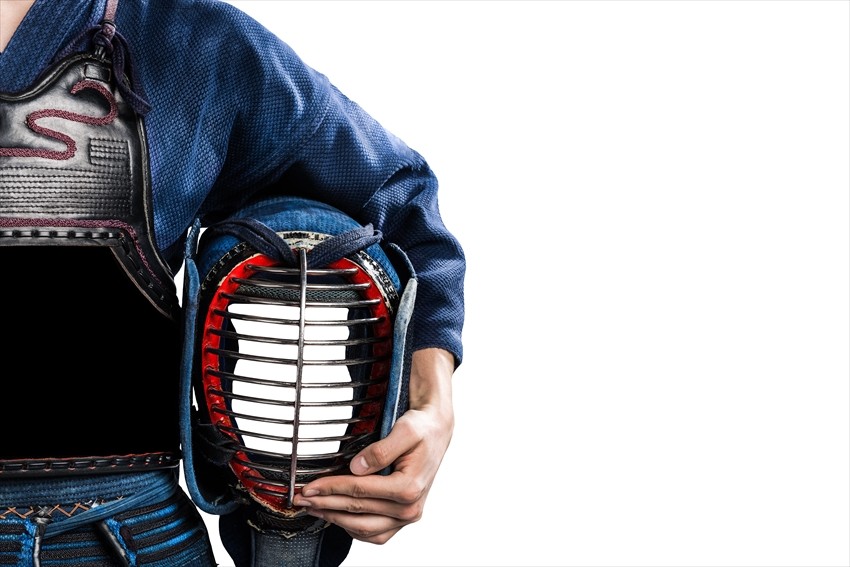
One of Japan’s budo, or martial arts, Kendo is a sign of physical and mental strength. Derived from traditional Japanese swordsmanship, it is now practiced around the world, with global championships held triennially. Learning the history, skills and elements of Kendo is a fascinating insight into Japanese culture as well as a unique art that combines combat with mindfulness.
* Purchases or reservations made through the links in this article may result in a portion of the proceeds being returned to FUN! JAPAN.
What is Kendo?
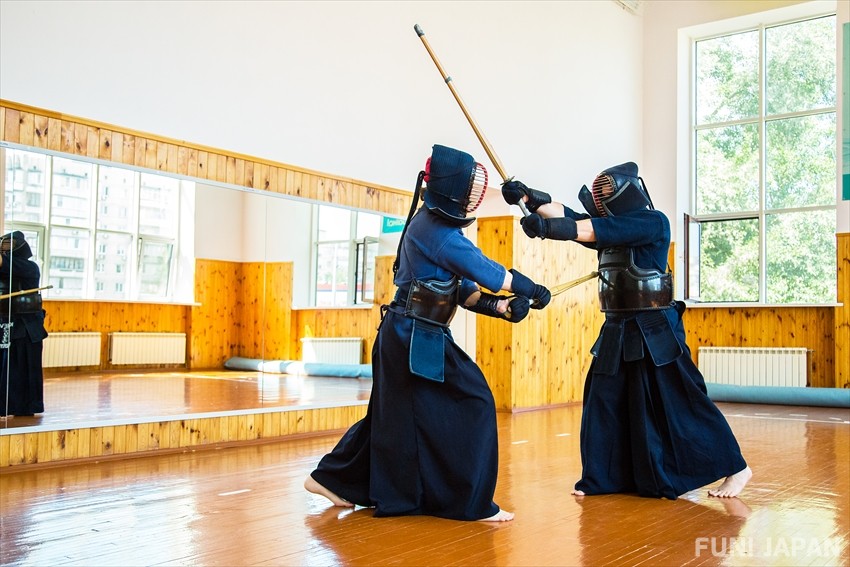
Meaning ‘way of the sword’, Kendo is one of Japan’s traditional martial arts. Often aligned with samurai and warrior life, it has now been modernised and is a popular activity for students and adults alike. Practiced by kendoka, it focuses on mental, physical and spiritual alignment and aims to provide a model for etiquette and focus that will enable its students to further society.
[kkday]👉【Kendo experience in NARA】 Beginners and children are welcome!
[kkday]👉 Osaka|2 Hour Kendo/Samurai Experience Tour In Osaka
[kkday]👉 Tokyo|2 Hour Kendo/Samurai Experience Tour In Tokyo
The History of Kendo
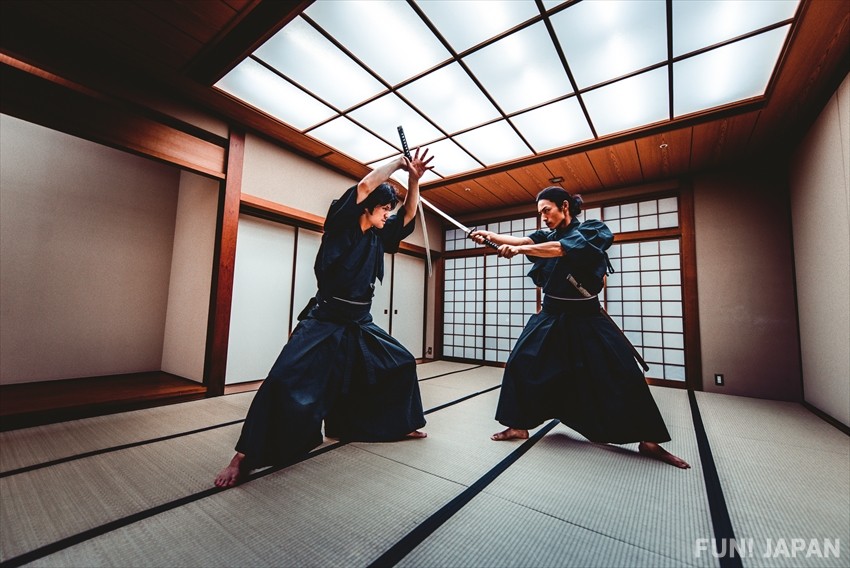
The emergence of the nihonto, or Japanese sword, in the Heian Period (794 - 1185) is seen as the advent of Kendo by many. With a distinctive curved blade and raised ridges, the unique blade led to a specialised art of swordsmanship developed by Samurai. Known as kenjutsu, this combined a variety of sword techniques and skills used in battle by footmen as well as those on horseback.
During the period of peace that came with the Edo Period (1603 - 1867), the focus of swordsmanship moved from violence to the nurturing of humanity, focusing on a disciplined way of life and developing concepts katsunin-ken, meaning ‘life-giving sword’. Warfare and spirituality were bound together by philosophers of the time, with many texts written by rulers, religious leaders and samurai. The focus on the potential for the ultimate sacrifice from a swordsman and the differentiation between good and evil was key, and formed the basis of the bushido spirit, which is the way of the warrior.
As the mental element of kenjutsu changed direction, so did the physical focus. Swordsmanship became an art, with grace and discipline adding a focus on practice and perfecting movement. Bamboo swords were introduced to allow practice without injury in the 18th century and Kendo was, for a short time, compulsory in Japanese schools. As the Samurai class was dismantled in the Meiji Restoration, (1868), swords were banned but a revival occurred and it slowly returned to favour. In 1912, the Nippon Kendo Kata formed to unify the teaching of kenjutsu. Bujutsu and Kenjutsu were officially renamed Budo and Kendo in 1919, replacing the jutsu (art) with do (way) to highlight the focus on the spiritual elements.
Following Japan’s occupation, Kendo was briefly banned as a militaristic practice. But following its return to independence, Kendo resumed and the All Japan Kendo Federation was founded soon after in 1952, achieving formal recognition as a federation in 1954. The International Kendo Federation formed in 1970 and the first World Kendo Championship was held in the same year, in Tokyo. Today, over 50 countries participate in the competition which is held every three years in locations across the world.
The Philosophy of Kendo
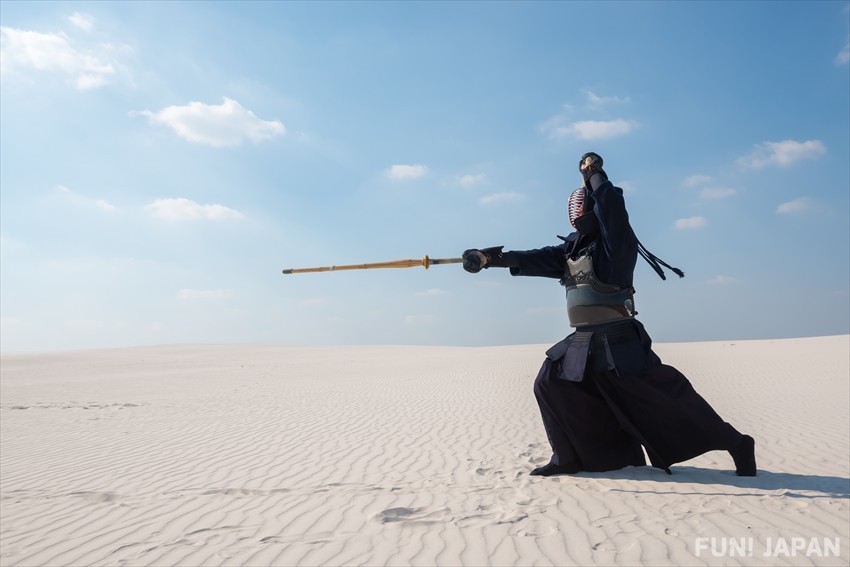
Developed from a martial art, Kendo has become a form of discipline and character development. Key elements highlighted by the leading All Japan Kendo Federation including cultivating a vigorous spirit, sincerity, courtesy, honour and self-improvement. These will enable the person to contribute to society, love society and promote peace in the wider world.
The goal of shin-ki-ryoku-no-itchi (mind, spirit and technique as one) is key, with the use of the shinai (wooden sword) used both towards the opponent but also the person themselves. Reiho is another vital aspect of Kendo and reflects the importance of etiquette. Showing respect for partners at all times along with a focus on nurturing development enable the development of a modest attitude both in and out of Kendo. Koken-chiai is an ideal of achieving mutual understanding for the advancement of humanity through Kendo and is at the core of all the art practices. While it is the way of the sword, it is also believed that Kendo should form a way of life, with the skills and growth that comes from its practice applicable to every aspect of daily life.
The Equipment Needed for Kendo
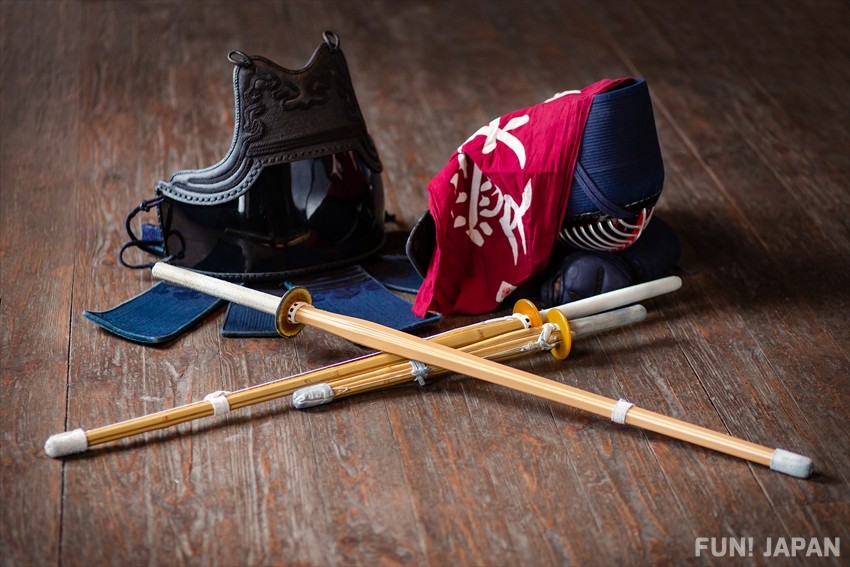
Kendo requires special equipment for practice and regulated items for competitions, mainly consisting of the bamboo sword and protective armour.
Shinai: The Sword
The focal point of Kendo is the wooden sword, called the shinai, which is formed of bamboo slats and leather joinings. The word shinai comes from shinau, meaning to bend, and was originally part of shinai-take which means ‘flexible bamboo’. The kanji, however, includes the symbol for sword, reflecting the specific use of the word in Kendo. The lack of rigidity means the impact of a strike is absorbed by the bamboo, and does not cause significant damage.
The shinai is formed of different sections, including the tsuka (the hilt) and the tsuba (the hand guard) which connects the four bamboo slats. These form the take and are held together with leather fittings and a string binds. Around ⅔ of the way along the take is a binding called the nakayui, which holds the slats together but also marks the striking portion of the shinai. The tip is held together with a rubber cap, called a saki-gawa.
The sizes of shinai are regulated by the International Kendo Federation for competitions and in general vary depending on the age, strength and size of the kendoka.
Generally, in Kendo a kendoka will use one shinai, but some opt to wield two, in a form called ni-to. In this form, a longer sword is held in the right hand while a shorter sword is held in the left, although this can be switched. This practice is more common in the Hyoho Niten Ichi-ryu school of Kendo.
Some kendoka will practice with bokuto, which are harder wooden swords rather than shinai, in order to reduce wear on the bamboo.
Kendo-bogu: The Protective Armour
While shinai have been designed to minimise physical injury, it is still necessary to wear protective armour known as kendo-bogu. This protects the head, arms, torso and legs, with an overall armoured look that, when combined with the traditional shouts, called kiai, can be quite intimidating.
The head is protected with a helmet called a men, which has a metal grill over the face to allow kendoka to see. There are also leather extensions which protect the throat and padded extensions to protect the shoulders and sides of the neck.
Hands and arms are protected using thick padded gloves called kote vehicle the torso is protected using a breastplate called a do. The waist and groin have a covering called a tare, which uses traditional-style horizontal faulds or vertical strips of heavy fabric. The clothing worn beneath the armour comprises of a simple hakama (wide-legged trousers) and a special jacket called a kendogi or keikogi.
[kkday]👉【Kendo experience in NARA】 Beginners and children are welcome!
[kkday]👉 Osaka|2 Hour Kendo/Samurai Experience Tour In Osaka
[kkday]👉 Tokyo|2 Hour Kendo/Samurai Experience Tour In Tokyo
Understanding a Kendo Match
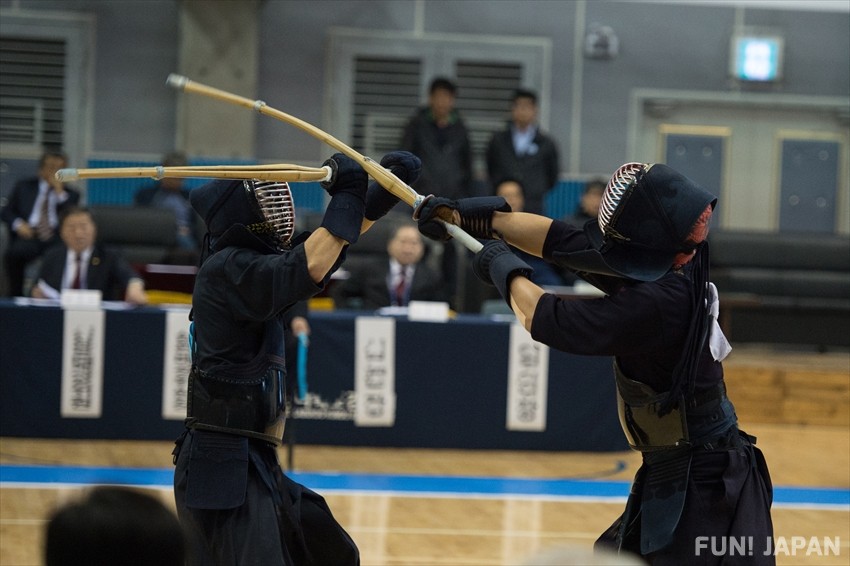
Scoring in Kendo competitions is based on successful strikes as well as the posture, awareness and approach of the kendoka.
Kendo Match Etiquette and Techniques
The importance of etiquette is key, with all Kendo matches beginning with bows towards the front, the judges and then the competitor. The shikaze-waza is the attempt of a strike, while the oji-waza is counter-attack. There are many examples of the different moves, with all following a strict raft of movements, practiced at increasing speed. Common attack moves include Harai-waza, Nidan-waza and Debana-waza, while common counter-attacks include Nuki-waza, Uchiotoshi-waza and Kaeshi-waza.
Making a Successful Strike in Kendo
For a successful strike the datotsu-bu section of the shinai must make contact with the datotsu-bu of the opponents armour. On the shinai, this means the blade-side of the top third of the slats, as marked by the nakayui. For the armour, this includes parts of the helmet, sides of the wrist, the sides of the torso and the front of the throat, all of which are suitably protected. As well as striking accurately, the kendoka must also stamp (fumikomu) and shout (kiai) for it to be an awardable point.
Kendo Match Points
Points are awarded by the referees, with three observing each match. The referees use coloured flags to signify points they believe should be awarded, and usually two of the three must agree for a point to be awarded. Competitions use a 3-point match system with time limits and there are three possible outcomes if a match ends in a tie: Hikiwake (a draw), Encho (match continues until a point is won) or Hantei (referees vote for the victor).
Grades and Titles of Kendo
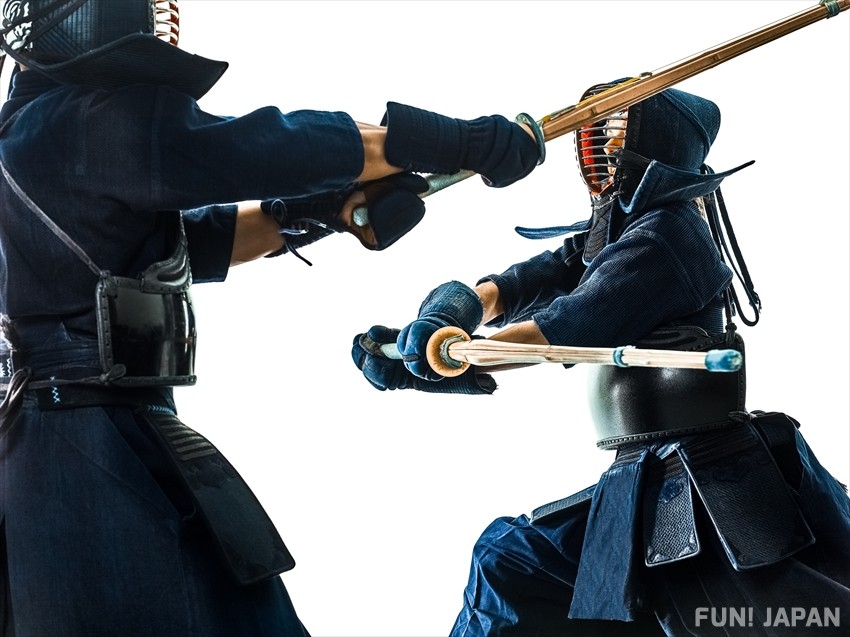
Like other traditional Japanese arts, the grades and titles of Kendo rely on the Kyu and Dan system. These are hierarchical and are awarded using examinations or assessments, with Kyu levels largely held by school-students, while adults move to Dan. Unlike some arts, there is no difference in the clothing worn by those of different grades in Kendo.
Kyu and Dan: The Grades of Kendo
School students starting in Kendo will begin at the lowest grade, which is the 5th Kyu, moving through the 4th, 3rd, 2nd and 1st, based on technique and approach. Following this, the Dan grades begin, but working conversely. These begin with the 1st Dan and progresses through to the 10th Dan. However, physical skills are only assessed up to the 8th Dan which requires the highest level of skill - beyond this, it is entirely focused on mental and spiritual approach. The 9th and 10th Dans are no longer awarded by the All Japan Kendo Federation, although the International Kendo Federation still permits them. Unusually, there are also some age limits placed on these - with the 1st Dan only available to those over the age of 13 and the 8th Dan to those over 46.
Shogo: The Titles of Kendo
As with other budo, once kendoka are progressing through the grades of Dan, they may wish to see some of the prestigious titles associated with martial arts. Renshi (instructor) is the first level and must hold the grade of 6-dan or higher and to have good instructor ability. The Kyoshi (teacher) must have already attained Renshi and be at 7th-dan or above to be considered. The final title, Hanshi, means master, and requires the highest degree of conduct. For this, a kendoka must already have become a Kyoshi and must have reached the 8th-dan in Kendo.
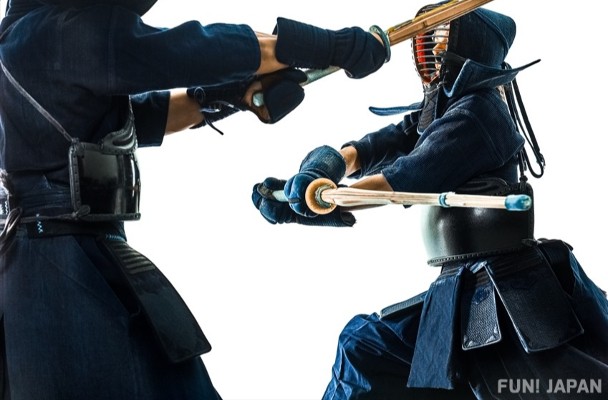
Comments